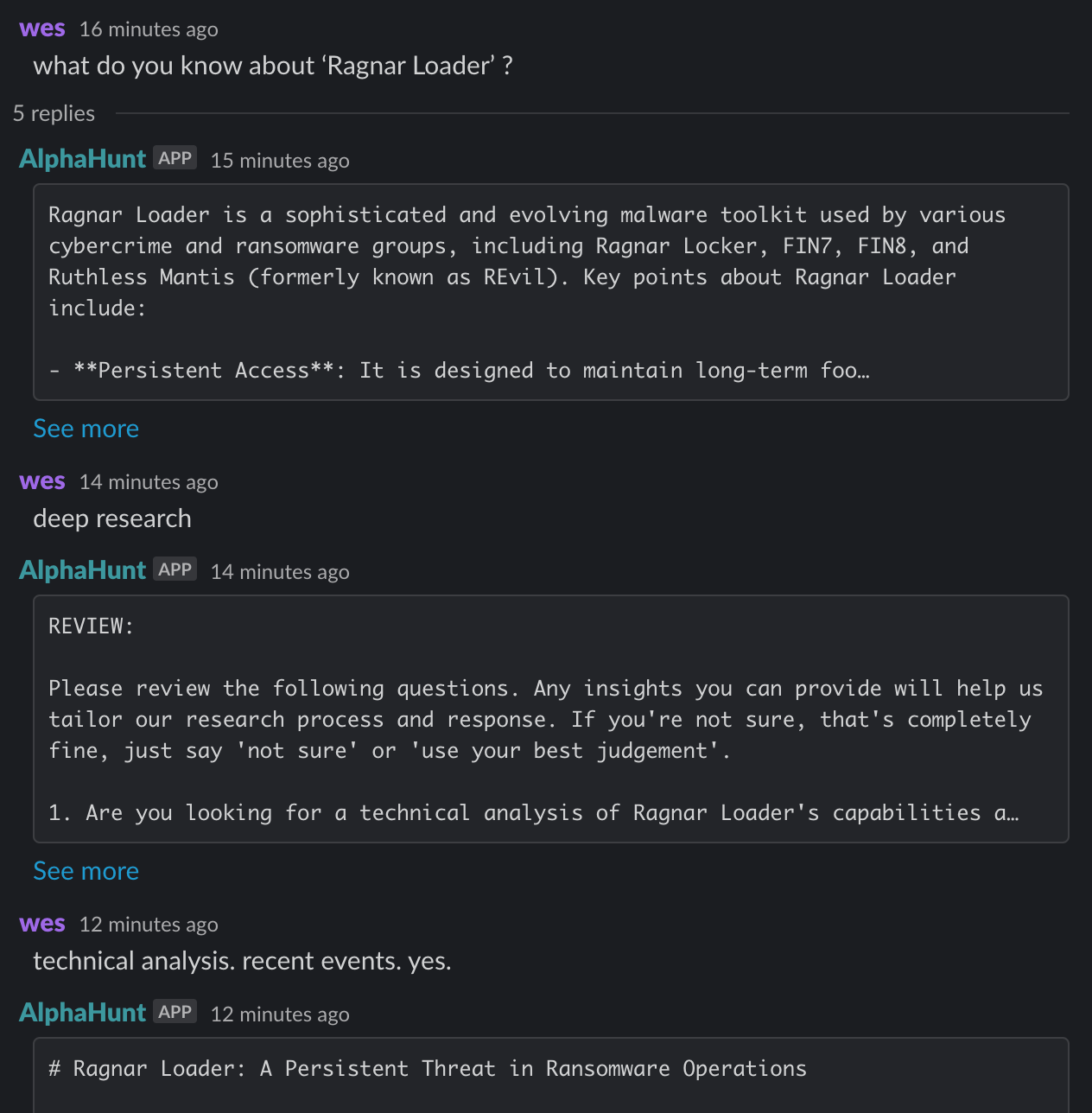Ragnar Loader: A Persistent Threat in Ransomware Operations
Ragnar Loader, a sophisticated malware toolkit, is primarily associated with ransomware groups such as FIN7, FIN8, and Ragnar Locker. It has evolved significantly since its emergence in 2020, integrating advanced capabilities to enhance its stealth and operational effectiveness.


EDITOR'S NOTE: I'm testing the next generation of the AlphaHunt- the research goes a bit deeper, a bit more directed and a bit more "peer" reviewed. The layout may still need some work... feedback welcome (just hit reply! :))
TL;DR
Key Points
-
- Ragnar Loader, also known as Sardonic Backdoor, is a sophisticated malware toolkit linked to ransomware groups like FIN7, FIN8, and Ragnar Locker.
- It has evolved to enhance stealth and operational effectiveness, primarily targeting financial gain through ransomware attacks and data theft.
-
- The malware has been active since 2020, with significant updates in 2023 and 2025, allowing it to bypass detection mechanisms.
- It targets countries like the U.S., Canada, the U.K., Australia, and Germany, focusing on sectors such as financial services, healthcare, and education.
-
- Recommendations include implementing advanced threat detection solutions, conducting regular security audits, and enhancing employee training.
- Organizations should also establish incident response plans and collaborate with cybersecurity intelligence sharing platforms.
Summary
Ragnar Loader, a sophisticated malware toolkit, is primarily associated with ransomware groups such as FIN7, FIN8, and Ragnar Locker. It has evolved significantly since its emergence in 2020, integrating advanced capabilities to enhance its stealth and operational effectiveness. The malware's primary motivation is financial gain through ransomware attacks and data theft, enabling threat actors to maintain persistent access to compromised systems.
Historically, Ragnar Loader has been linked to high-profile cybercriminal activities, reflecting a trend among cybercriminals to utilize modular and adaptable malware. It targets countries like the United States, Canada, the United Kingdom, Australia, and Germany, focusing on sectors such as financial services, healthcare, education, manufacturing, and retail.
Recent reports highlight Ragnar Loader's use in bypassing detection mechanisms, leading to significant data breaches and operational disruptions. Recommendations for organizations include implementing advanced threat detection solutions, conducting regular security audits, enhancing employee training, establishing incident response plans, and collaborating with cybersecurity intelligence sharing platforms.
In the short term, a surge in ransomware attacks targeting healthcare and financial sectors is expected, driven by the ongoing evolution of Ragnar Loader. Long-term forecasts suggest a proliferation of modular malware in ransomware operations and potential regulatory changes in response to the growing threat.
Attribution
Origin
Ragnar Loader, also known as Sardonic Backdoor, is a sophisticated malware toolkit primarily associated with various ransomware groups, including Ragnar Locker, FIN7, and FIN8. It has evolved significantly, integrating advanced capabilities to enhance its stealth and operational effectiveness. The malware was first documented in 2021 and has been actively used since 2020.
Motivation
The primary motivation behind Ragnar Loader is financial gain through ransomware attacks and data theft. The malware enables threat actors to maintain persistent access to compromised systems, allowing them to execute remote control operations and evade detection.
Historical Context
Ragnar Loader has been linked to several high-profile cybercriminal activities, particularly in the ransomware domain. Its development reflects a trend among cybercriminals to utilize modular and adaptable malware that can be tailored for specific attacks, enhancing their effectiveness and resilience against detection.
Timeline
- 2020: Emergence of Ragnar Loader as part of the Monstrous Mantis ransomware ecosystem.
- 2021: First documented use by FIN8 in an unsuccessful attack on a U.S. financial institution.
- 2023: Reports of its use by various ransomware groups, including updates to its capabilities.
- 2025: Ongoing enhancements to its functionalities, with recent incidents highlighting its use in bypassing detection mechanisms.
Countries Targeted
- United States - The primary target for ransomware operations, with numerous incidents reported.
- Canada - Frequently targeted alongside the U.S. due to proximity and shared infrastructure.
- United Kingdom - A significant number of attacks have been reported, particularly in the financial sector.
- Australia - Targeted for its growing digital economy and vulnerabilities in cybersecurity.
- Germany - Notable incidents have occurred, particularly in industrial sectors.
Sectors Targeted
- Financial Services - High-value targets due to the potential for significant financial gain.
- Healthcare - Vulnerable due to critical data and often outdated security measures.
- Education - Increasingly targeted for sensitive data and ransomware attacks.
- Manufacturing - Targeted for operational disruption and data theft.
- Retail - Vulnerable due to customer data and payment processing systems.
Links to Other Malware
Ragnar Loader is part of a broader ecosystem of malware used by ransomware groups, including variants like BlackCat and other tools that facilitate similar operational capabilities.
Similar Malware
Ragnar Loader shares similarities with other malware strains used in ransomware operations, particularly those that employ advanced evasion techniques and modular architectures, such as QakBot and IcedID.
Threat Actors
Ragnar Loader is primarily utilized by cybercriminal groups such as FIN7, FIN8, and Ragnar Locker. These groups leverage the malware for persistent access and ransomware operations, employing sophisticated tactics to evade detection.
Breaches Involving This Malware
Ragnar Loader has been instrumental in various breaches, particularly involving ransomware groups. Recent reports indicate its use in bypassing detection mechanisms, leading to significant data breaches and operational disruptions across multiple sectors. For instance, it has been linked to incidents where organizations faced substantial financial losses due to ransomware attacks.
Recommendations, Actions, Suggested Pivots, Forecasts and Next Steps..
(Subscribers Only)





